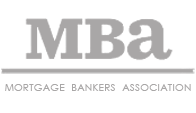Fed Ready to Keep Mortgage Rates Low for Longer as Yellen Set to Testify | The Federal Reserve signaled its willingness to keep interest rates near zero for longer, surprising investors betting that a resurgent labor market would prompt an increase as early as June.
Many Fed officials judged that risks ranging from a stronger dollar to the crisis in Greece “had inclined them toward” keeping rates near zero “for a longer time,” according to minutes of their Jan. 27-28 gathering released Wednesday in Washington.
Attention now turns to testimony next week by Fed Chair Janet Yellen as investors seek clarity on the likely timing of the first rate increase since 2006, after the minutes highlighted concern that inflation remains too low.
“Job growth is strong, but what you see in the minutes is they want more than that,” said Thomas Costerg, an economist at Standard Chartered Plc in New York. “They’re in no rush to tighten policy, and they want to see all the stars align before they do.”
In its Jan. 28 statement, the Federal Open Market Committee repeated its pledge to be “patient” as it considers when to raise rates, even as it described the labor market as “strong.”
Yellen has said the phrase means the Fed is unlikely to tighten for at least two meetings. Officials last month expressed concern that removing the pledge would lock them into a timetable, the minutes showed, and that “financial markets might overreact.”
Dollar Weakens
The dollar weakened and Treasuries advanced. The Bloomberg Dollar Spot Index, a gauge of the currency’s performance against 10 major peers, declined 0.05 percent as of 4:00 p.m. in New York after rising as much as 0.4 percent. Two-year Treasury yields sank six basis points, or 0.06 percentage point, to 0.60 percent.
The minutes showed some officials believed that rates had already been kept low “for a sufficient length of time, and that it might be appropriate to begin policy firming in the near term.”
“I don’t think it takes June off the table,” said Drew Matus, an economist at UBS Securities LLC in New York, given that wages and oil prices have picked up since the meeting. “Everything has looked pretty healthy since then.”
Michael Feroli, chief U.S. economist at JPMorgan Chase & Co. in New York, kept to his prediction that the Fed would drop the reference to patience at its next meeting, scheduled for March 17-18.
Runway Foam
“This nervousness around the market’s reaction suggests the committee will put plenty of foam on the runway when they do remove the ‘patient’ language, presumably by adding some suitably dovish offset elsewhere in the statement,” Feroli, a former researcher for the Fed board in Washington, wrote in a research note.
The panel, while considering risks to the outlook to be “nearly balanced,” pointed to a strengthening dollar, international flash points from Greece to Ukraine, and slow wage growth as weakening the case for higher rates.
Most officials expect to raise rates this year, according to projections released in December, and a number have since said that an increase around midyear is possible.
The argument for raising rates sooner was bolstered by a government report released a week after the Fed meeting, which showed payroll gains in January capped the strongest three months of job growth in 17 years.
Inflation Discussion
At the same time, the minutes show an extended discussion of the causes and consequences of an inflation rate that has lingered below the Fed’s 2 percent target for 32 months.
Several participants saw “the continuing weakness of core inflation measures as a concern,” with a few suggesting that weakness in wage growth could delay a return to the Fed’s target. A number said that with stable inflation expectations, “the fall in energy prices should not leave an enduring imprint on aggregate inflation.”
Yellen has said the committee will want to be “reasonably confident” before it raises rates that inflation will move back up toward 2 percent over time.
The minutes also noted that “tepid nominal wage growth, if continued, could become a significant restraining factor for household spending.”
In their discussion of global risks, officials said that while additional easing by central banks and cheaper oil were positive for the U.S., the stronger dollar was restraining exports.
“The minutes definitely leaned dovish,” said Tom Porcelli, chief U.S. economist at RBC Capital Markets LLC in New York. “A June liftoff was dinged today to some extent, though it doesn’t mean it’s off the table.”








